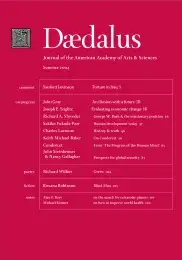on the search for extrasolar planets
Astrobiology, the search for life’s origins and its existence elsewhere in the universe, used to seem like a visionary dream. But in recent years, it has become a true science, thanks in part to new developments in the search for Earth-like planets outside our own solar system.
A new era in scientific discovery was initiated in 1995 with the announcement, by the Swiss astronomers Michel Mayor and Didier Queloz, of the first Jupiter-mass companion to a Sun-like star. Progress on the detection of planets outside our solar system has occurred at a breathtaking pace ever since; scarcely a month goes by without a new revelation of some sort or another. Already well over a hundred extrasolar planet candidates have been announced, and the pace of discovery promises to quicken as additional ground-based search programs swing into action. Meanwhile a number of powerful space-based observatories specifically designed to search for and characterize planets as small in mass as Earth are being planned for the next two decades.
These advances have fueled, in turn, furious theoretical work on the formation and migration mechanisms of planets inside and outside our solar system. All the extrasolar planets discovered to date appear to be gas giant planets, similar to Jupiter and Saturn, and the theory of gas giant planet formation is in flux as a result.
The amazingly short period of the first extrasolar, Jupiter-mass planet discovered brought the possibility of planet migration to the attention of theorists. The extrasolar planet orbits its host star, 51 Pegasi, in a mere 4.23 days, compared to Jupiter’s leisurely 11.9-year orbit around the Sun–and, according to Kepler’s third law, it orbits 51 Pegasi about a hundred times closer than Jupiter orbits the Sun. The formation of a Jupiter-mass planet so close to its parent star appears to be difficult, if not impossible, so theorists such as myself have hypothesized that some giant planets must form at larger distances and then migrate inward to their final orbital distances.
There are two very different ideas for how gas giant planets might form. Most astronomers favor the conventional theory of core accretion, where a solid core forms first and then accretes a gaseous envelope. In 1997 I proposed a very different mechanism, based on the hypothesis that a protoplanetary disk was likely to pass through a phase of marginal . . .
